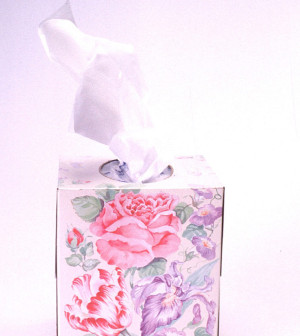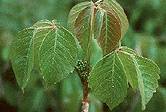- Skip Storing This Everyday Product in the Fridge Door
- Green Tea + B3 Pairing May Boost Brain Health
- Navigating Your Midlife Crisis: Embracing New Possibilities
- City Raccoons Showing Signs of Domestication
- Mapping the Exposome: Science Broadens Focus to Environmental Disease Triggers
- One Week Less on Social Media Linked to Better Mental Health
- Your Brain Changes in Stages as You Age, Study Finds
- Some Suicide Victims Show No Typical Warning Signs, Study Finds
- ByHeart Formula Faces Lawsuits After Babies Sickened With Botulism
- Switch to Vegan Diet Could Cut Your Greenhouse Gas Emissions in Half
Poison Ivy’s Gonna Get Ya…


Poison ivy, oak and sumac are common outdoor hazards, but there are a number of ways to prevent exposure and reduce your suffering if you do come into contact with these plants, an expert says.
“Millions of Americans every year develop an allergic rash after being exposed, and these poisonous plants are pretty much everywhere in the United States except Alaska and Hawaii,” Renee Miller, from the Tennessee Poison Center at Vanderbilt University Medical Center, said in center news release.
Oils in the plants’ leaves, roots and vines get into the skin almost immediately after contact and bind with proteins, causing an immune system reaction that leads to extreme itchiness.
“If there’s a risk for exposure, wear long pants, long sleeves, gloves and boots,” Miller said. But she noted that rubber gloves won’t protect you because the plant oils are soluble in rubber and will get through the gloves to your skin.
It’s also important to remember that you can get the itch-inducing oils from clothes and pets that have had contact with the plants.
If your skin comes into contact with these plant oils, wash as quickly as possible with soap and lukewarm water.
“If you wash within the first 15 minutes after exposure, 100 percent of the oils can be washed away. If you wait an hour, zero percent can be washed away,” Miller said.
A rash caused by poison ivy, oak or sumac typically appears within 24 to 28 hours, but can appear sooner or later. If you do develop a rash, there are a number of things you can do to be more comfortable.
“Once an exposure has occurred, topical steroids and antihistamines are the mainstay for treatment,” Miller said.
“Prescription cortisone can halt the reaction if used early. Unfortunately, once the vesicular stage [with small, fluid-filled blisters] has started, treatment with systemic steroids is the only effective solution. Oatmeal baths and cool showers may also be helpful,” she said.
More information
The U.S. National Library of Medicine has more about poison ivy, oak and sumac.
Source: HealthDay
Copyright © 2025 HealthDay. All rights reserved.










